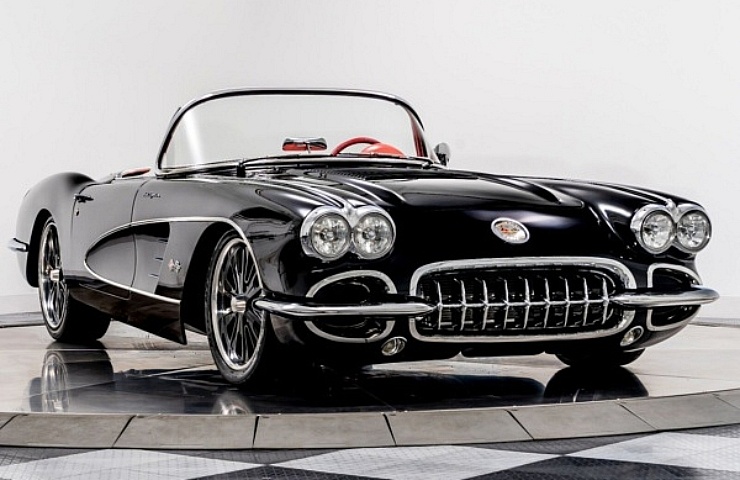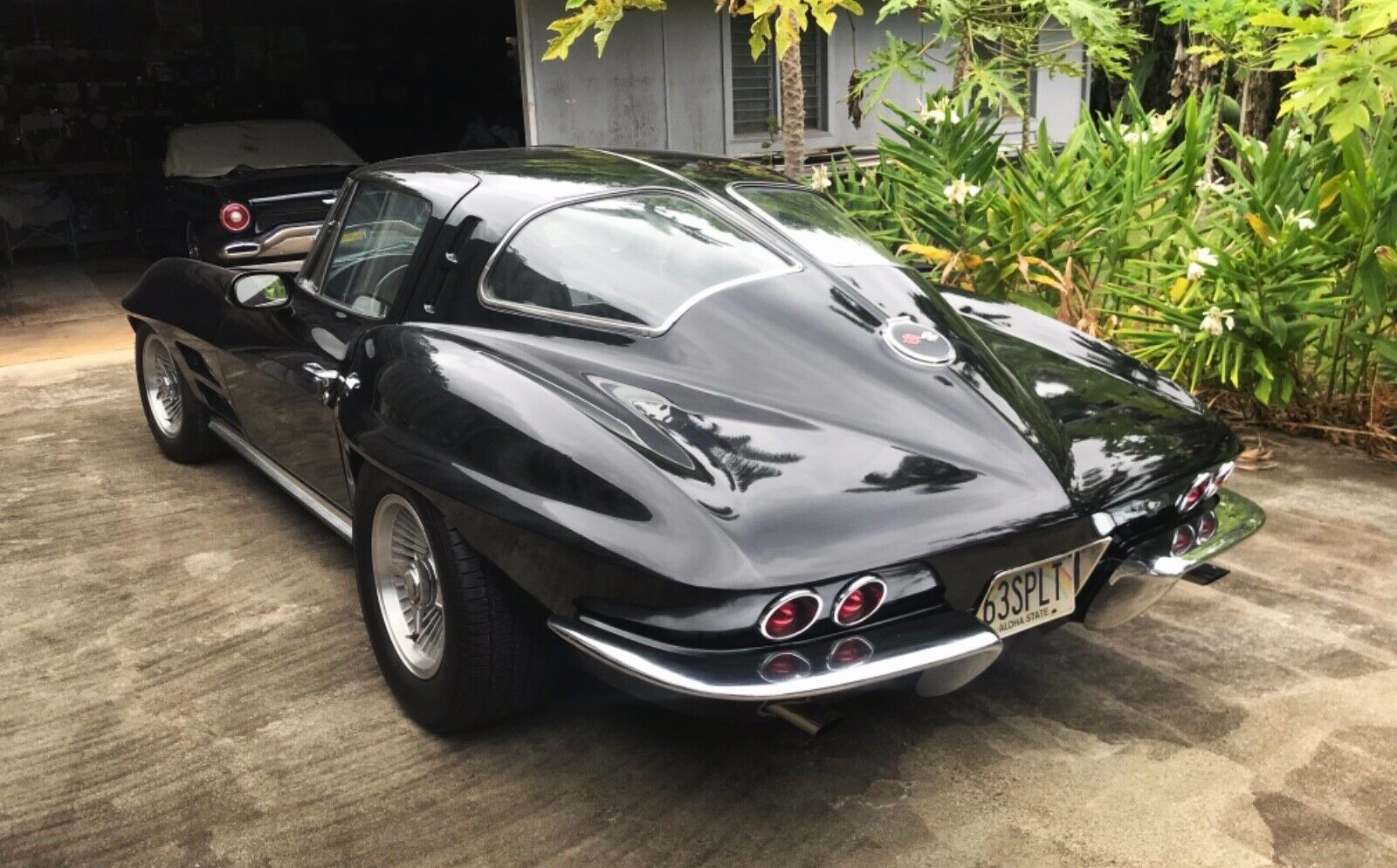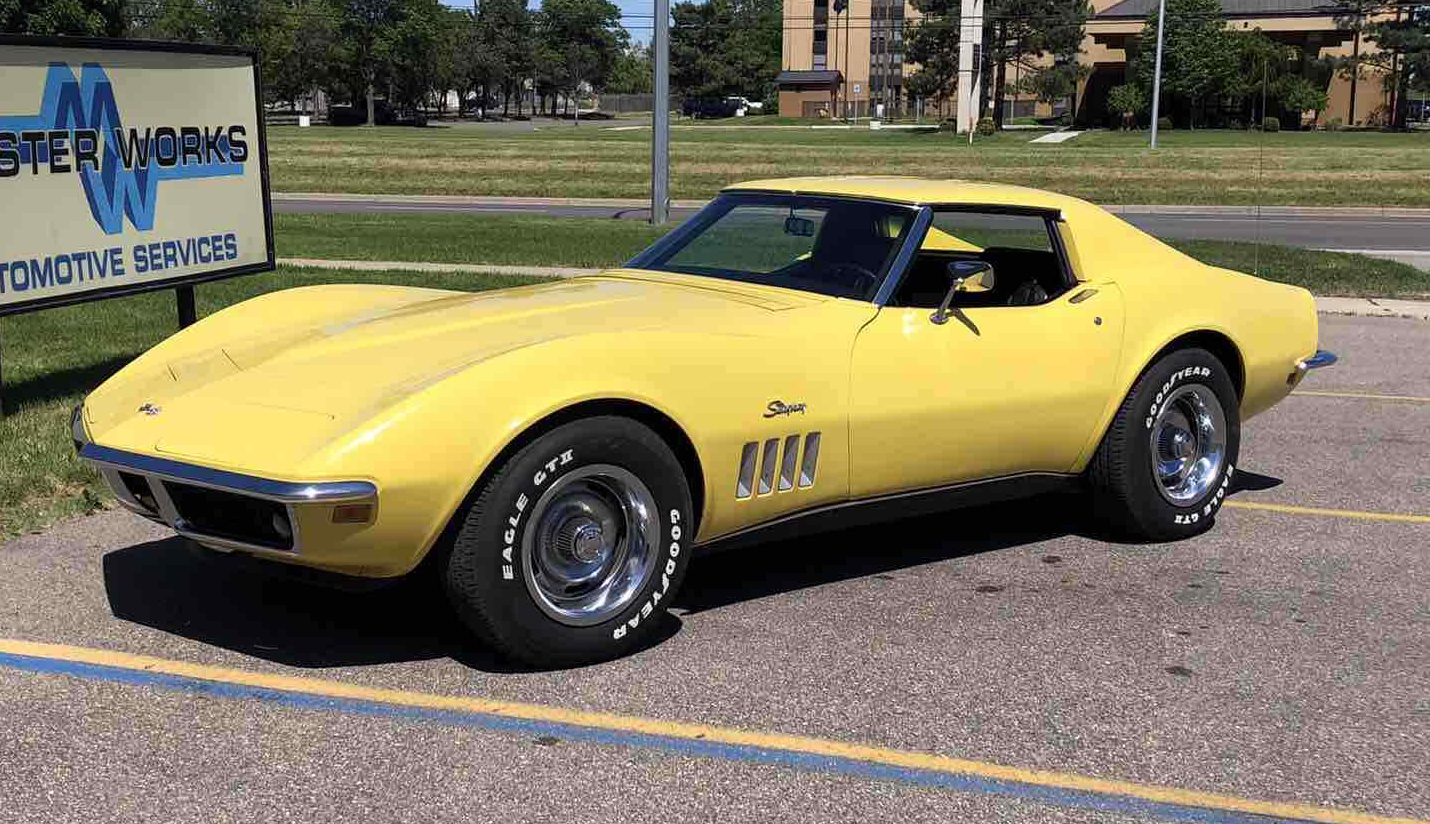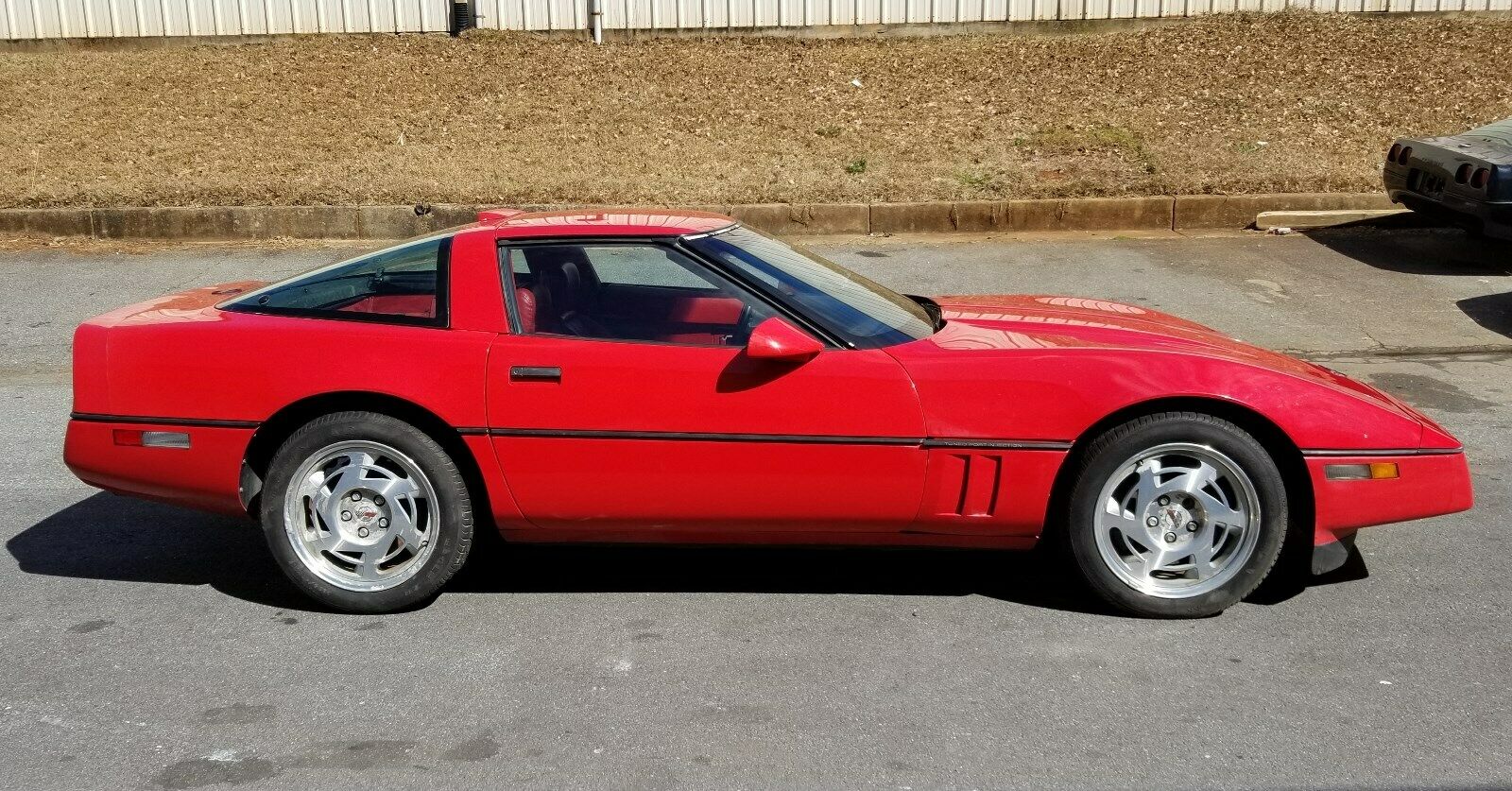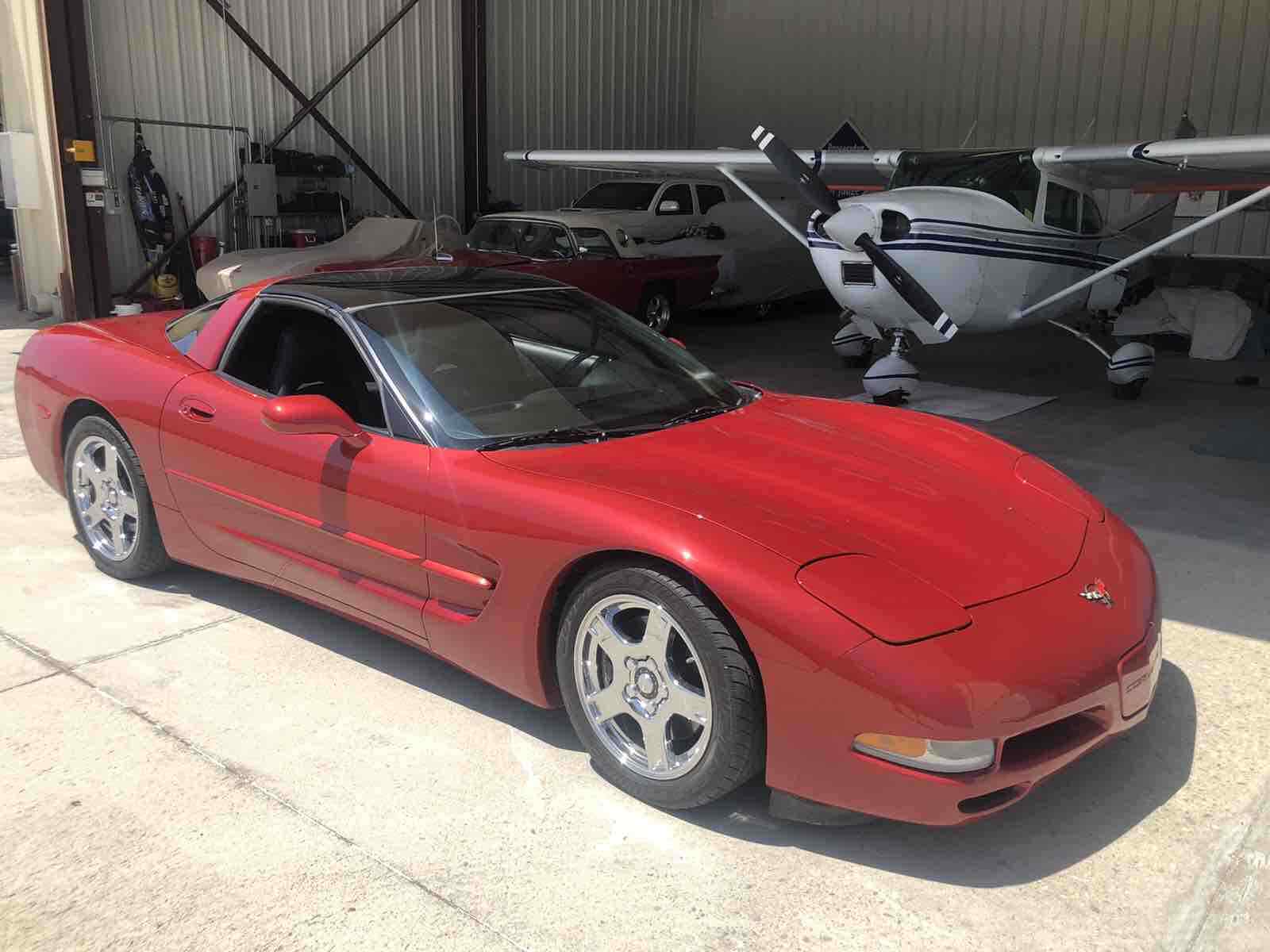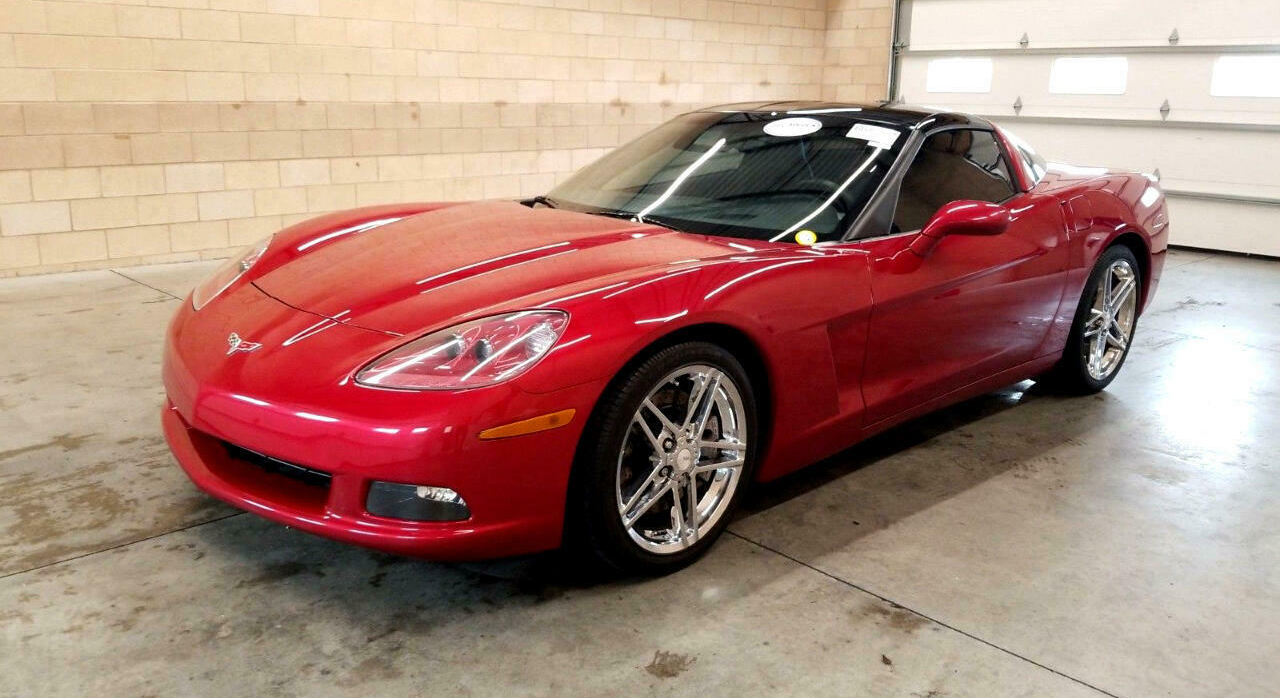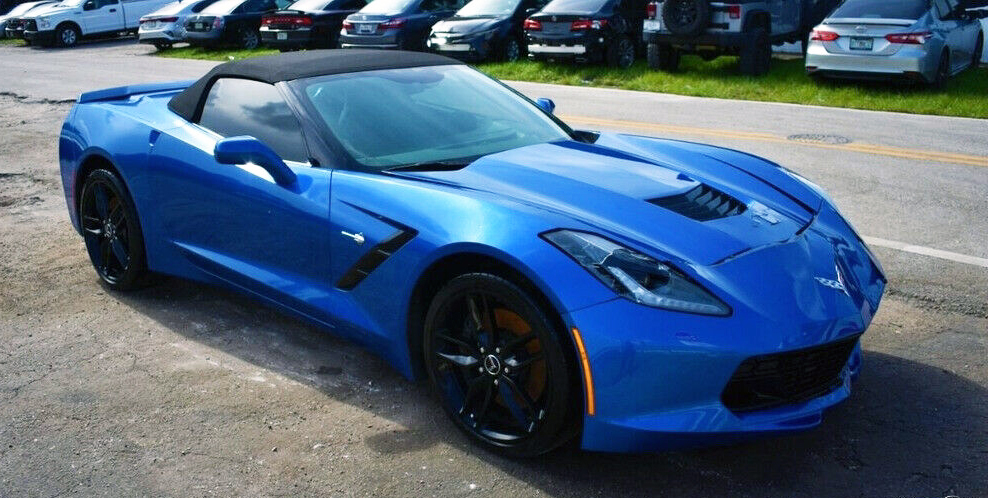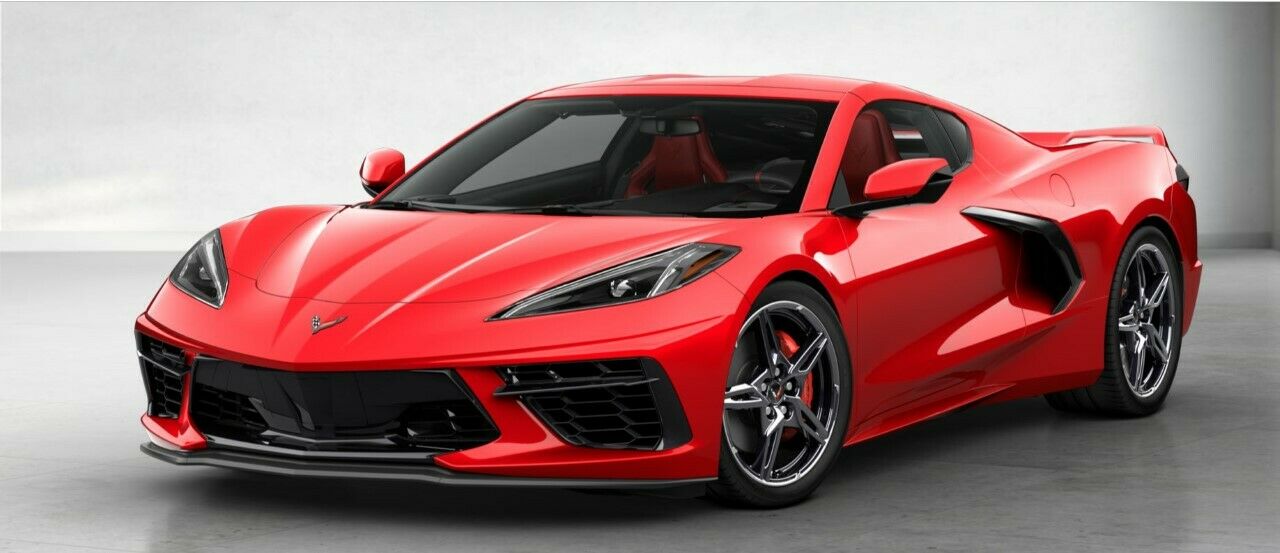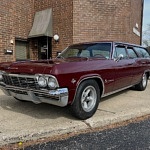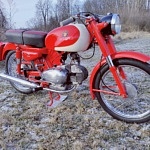Contents
US soldiers coming back from World War II were enamored of the two-seat roadsters they’d seen in Europe. But they found nothing similar in the United States. Suddenly, English cars began to sell with funny names like Jaguar, Triumph, and MG. Finding itself in a sales slowdown circa 1950, Chevrolet gave the green light to a plastic-bodied sports car, spawning the eight generations of Corvette body styles we’re honoring here.
The new science of fiberglass was all the rage with customizers. They were building their own because there were no US sports cars on the market. Chevy viewed the Corvette concept as a “dream car” at the General Motors Motorama at the Waldorf Astoria Hotel in New York in January 1953.
Before we run down the history of Corvette generation years, let’s remember that Corvettes make great starter classics. That’s because Corvette parts are easy to find, except for the rarest models. You can find most of the mechanicals, exterior parts, and interior appointments, used or reproduced. The cars keep their value very well. And you can enjoy them while the price appreciates. Because “America’s sports car” offers endless ways to customize, Corvette accessories are another must-have.
Shop now for Corvette partsC1 Corvette Generation (1953 – 1962)
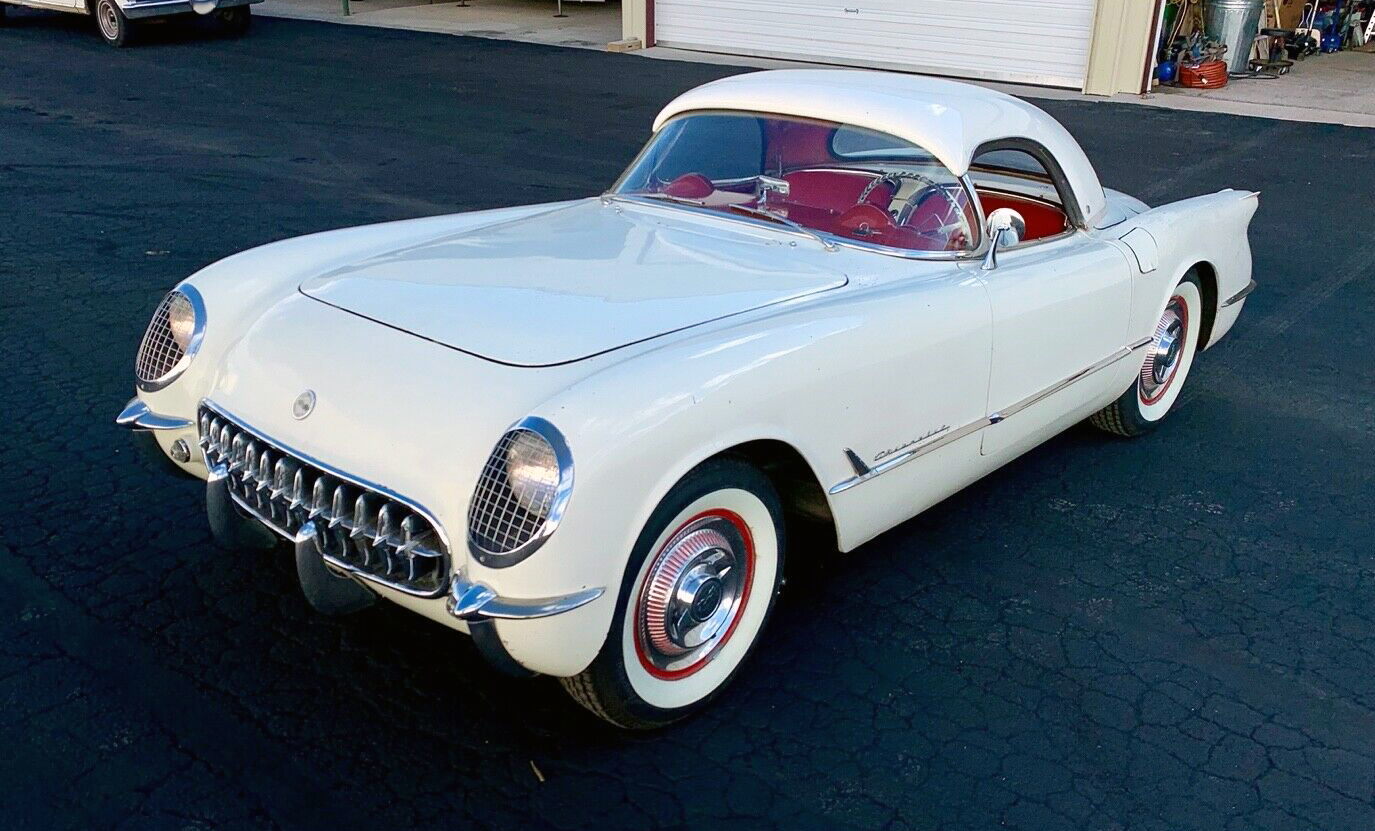
1953 Chevy Corvette – The first-ever Corvette model, launching the car’s C1 generation.
GM played it safe with the first Corvette generation, debuting in June 1953 and produced in Flint, Mich. It looked the part but was conservative on the mechanical side. GM adapted the chassis from the 1949-1954 passenger cars complete with the 150-horsepower, 235-cubic-inch “Blue Flame” six as the only engine choice in ’53 and ’54, coupled to an automatic transmission. Features included a solid rear axle (the only one in a Corvette) and a perimeter frame with a big, heavy X-member added to stabilize the roofless design.
You might think that folks would flock to such a snazzy-looking car. No other American carmaker had anything close. But it wasn’t a big seller. Chevy only built 300 (all white) for ’53, and (with more colors added) 3,640 in 1954.
The General added the 265-cubic-inch V-8 as an option for 1955. But there were so many extra ’54s that GM produced only 700 ’55s. Now the car could motivate pretty well in a straight line. Yet, poor handling, ride, and braking hampered all the early Corvettes.
The same is true for most American cars of the era. Typically, the Corvette got styling updates every year. This included a new body for ’56 and a new tail for ’61. But, technical advances (such as four-speed manual and available fuel injection in ’57) came slower.
The 1960 debut of the Route 66 TV show boosted sales that year. Martin Milner and George Maharis drove a ‘Vette. The Corvette went from 6,339 units in 1957 to 10,261 in 1960. And 1961 was the last year for two-tone paint, including “coves” in a contrasting color.
C2 Corvette Generation (1963 – 1967)
GM presented the C2 fastback coupe with a bang in 1963. The famed Larry Shinoda designed the car. Technical limitations commanded that the rear window on the new Sting Ray (then two words) have a split design. It was considered unnecessary and rear-vision-blocking by 1964.
Corvette guru Zora Arkus Duntov would have liked to give the second-generation Corvette a mid-engine design. But, that had to wait until 2020. Underpinning the C2 was a full-frame with steel rails. The rails connected by ladder-style cross members. It was much stiffer. And now the Corvette had independent rear suspension.
The car looked great from all angles, including that gorgeous roof and those hidden pop-up headlights. Now the muscle car revolution was well-established. 360 horsepower was possible in 1963 with up to 375 horsepower with fuel injection in 1964. GM offered a total of four 327s. The big-block V-8s debuted in 1965, including the 425-horsepower 396 L78. Four-wheel disc brakes also arrived in 1965. By this time, you could even get electronic ignition and a vertically mounted AM-FM radio.
C3 Corvette Generation (1968 – 1982)
The C3s are bread-and-butter models — the least collectible of the Corvette generations. Still, special equipment adds a lot of value. The ZR-1 package (430 horsepower) comes to mind. But many ‘Vettes of this era offer anemic, emissions-strangled performance. Another reason for this was low-lead fuel, which lowered compression ratios and power. The base engine was a 350-cubic-inch V-8 producing up to 300 horsepower.
The 1965 Mako Shark II concept car inspired the Coke-bottle styling introduced in 1968. The style is an acquired taste. T-tops debuted around this time, and have their partisans, but leaking was a concern. Sales picked up in these years. The Corvette outsold such snazzy competitors as the Olds Toronado, Cadillac Eldorado, Avanti II, and AMC Marlin.
Chevrolet produced its 500,000th coupe in St. Louis in 1977. The one-millionth car, a convertible built in 1992, was recently restored after falling through the floor at the National Corvette Museum in Kentucky circa 2014. In 1981, the production of the Corvette moved to Bowling Green, Ky., where it is to this day.
1983: The Missing Corvette Model Year
GM planned the fourth-gen Corvette as a 1982 model. It was meant to stand for a bold new direction. But it was pushed back to fall ’82 and again to spring 1983. By the time it arrived, Chevrolet had chosen it as a 1984 model. That’s why there’s no 1983 Corvette model — the only gap year over seven decades.
Of the 40-plus 1983 prototypes and pilot line cars produced, only one lives on. See a photo and specs of the one and only 1983 Corvette on permanent display at the National Corvette Museum.
C4 Corvette Generation (1984 – 1996)
This was the Corvette’s first full redesign since 1963. It brings the car into the modern era with an aerodynamic shape (0.34 drag coefficient). The chassis and the body have reinforced fiberglass. A new five-link rear axle improved handling, as did rack-and-pinion steering. The 350 V-8 was the standard engine until 1983 when the 230-horsepower L98 came in. Now there were aluminum brake calipers and a gee-whiz electronic dashboard—albeit tricky to fix now if it goes bad.
A period oddity is the Doug Nash “4+3” transmission offered from 1984 to 1988, a manual with fuel economy improved by a switchable overdrive on the top three gears. By 1989 you could get a nifty ZF six-speed manual. Corvettes’ 35th anniversary came in 1988 (and the 40th anniversary in 1993).
Also, there are special editions to commemorate those dates. It’s collectible if you care about special badging. The ZR-1 of 1990 (lasting until 1995) boasted a Lotus-derived four-cam design with 375 horsepower. The 300-horsepower LT1 was introduced in 1992. An early form of traction control called Acceleration Slip Regulation (ASR) also debuted. Nerd fact: 1993 was the first year for keyless entry.
C5 Corvette Generation (1997 – 2004)
Throughout four Corvette generations, the sports car was finally becoming competitive with European supercars. The C5, another new design, featured a rear transaxle. It was could reach 176 mph and was even more aerodynamic than the C4. It was also a lightweight compared to earlier Corvettes.
The convertible model reappeared for the 1998 model year.
The Z06 model, dormant since 1963, returned for 2001. It came with 385 horsepower (405 in 2002-2004 cars) via a modified LS1. The Z06 also featured a hood made of novel carbon fiber, and a titanium exhaust system. It was a blast to drive and handled better than the earlier ZR-1. A heads-up display came in 2000 and it’s still there in 2020.
C6 Corvette Generation (2005 – 2013)
The C6—the sixth for Corvette generations—stands for a small step forward. Although it was not a significant redesign. Power was up a bit in the LS2 version of the V-8 to 400 horsepower, with 4.2-second zero to 60 times. An astonishing 190 mph was possible. The C6 was very slippery (0.28) and lighter than the C5, but it still gulped fuel at 16 mpg in the city, 26 on the highway.
Again, there was a Z06, this time with an aluminum chassis, arriving in late 2005. The seven-liter version of the small block, LS7, displaced 427 cubic inches. It offered 505 horsepower (plus 470 pound-feet of torque). Now you could reach 60 mph in only 3.7 seconds, and 198 mph at the top end. The Grand Sport model returned in 2010 (using the base LS3 and the Z06 chassis). Side airbags!
C7 Corvette Generation (2014 – 2019)
Rumors of a mid-engine design were flying around. But, that didn’t happen in this delayed model, which remained rear-wheel drive. For 2014, the C8 offered a 455-horsepower version of the 6.2-liter LT1. With optional performance exhaust, it produced 460 horsepower. A carbon fiber hood was a weight-reducing feature. Though the rest of the car was either composite or “carbon nano” composite. Despite all this, the car was heavier than the C6 by about 100 pounds.
In Z06 form, announced in 2014 and available in 2015, the supercharged version of the aluminum 6.2-liter LT4 powered the C7. It produced a mammoth 650 horsepower. The six-speed automatic evolved into an eight-speed.
The Stingray designation (now one word) came back for the new model. It featured a 460-horsepower version of the LT1. ZR-1 was also back, in 2019, with 755 horsepower from a supercharged LT5. The last C7, a black Z06, sold at an auction in Connecticut in 2019 and fetched $2.7 million for charity.
C8 Corvette Generation (2020)
And at last, on our tour of Corvette generations, we come to the Corvette I now have in the driveway: a C8 Stingray Coupe
Standard power from the LT2 is 495 horsepower. But the big news is that the engine is mounted amidships. Yes, the mid-engine Corvette is finally here. Not since the Pontiac Fiero has GM tried this layout. The engine sits high and visible, under an enormous rear hatch/engine cover. The cover also reveals a smallish bin that can handle the targa top and not much else. A small frunk sits at the front of the car.
Everyone who sees this car goes nuts over it, and I have many neighbors. It’s a beautiful design, though so low to the ground that it scrapes bottom on even elevated driveways. The interior is a leather symphony and more tastefully done than on jukebox-friendly earlier editions. You fall into the car but land in a wonderful place.
The Corvette would be ideal for fast interstate commerce. I found the seats comfortable on a 50-mile blast and arrived refreshed. This alone sets it apart from earlier versions, which loved to impress off the line but could get tiring on the highway. And it handles exceptionally well, with the bonus of very little wind noise.
The 2020 Corvette makes a very favorable first impression. As tested with almost every option (including the $5,000 performance package), the car costs $82,925. Higher-performance variants of the C8 are coming. It’s a Corvette, after all.
Shop now for Corvette parts
